
Selecting the right dehumidifier is a minefield for many people as brands send out conflicting information trying to persuade consumers to buy. Do you need a desiccant dehumidifier or a compressor model? Our sales are fairly even between the two technologies which puts us in an unique situation to provide unbiased advice.
There are two types of dehumidifiers: desiccant and compressor. At Meaco, we manufacture and sell an equal amount of both types of technologies, so we are uniquely placed to give unbiased advice on which would be best for your needs. Both types of appliance will help prevent mould and damp by extracting water.
Because there are two different types of dehumidifier technology on the market, confusion comes when someone has to decide which one to buy. Below is a cut-and-keep guide to making the right choice.
Generally speaking, a compressor dehumidifier is suitable for a room with an air temperature above 10°C, and a desiccant dehumidifier is more suited for temperatures below 10°C.
So, there are 6 key factors which may help you decide whether a desiccant or compressor dehumidifier suits you best:
- What is the temperature of the space you want to use your dehumidifier?
- Will a dehumidifier keep the room warm and dry?
- Can a dehumidifier dry laundry?
- How much does a dehumidifier weigh and how easy is it to move around?
- How much does a dehumidifier cost to run?
- And how much noise does a dehumidifier generate?
Compressor dehumidifiers are the established way of doing things having been around for 50+ years. They work by creating a cold surface and when the warm, damp air from within the room comes into contact with the cold surface, condensation forms, and the water is removed from the air. Jump to the comparison table.
A desiccant dehumidifier has no compressor and does not use a cold surface to extract the excess moisture from the air. Instead, it has a desiccant wheel that absorbs the moisture from the air, in a similar way to a sponge. The desiccant is regenerated by an internal heater and fan so that the process can be repeated time and time again. Jump to the comparison table.
Main applications to consider when choosing between dehumidifier types:
Which type of dehumidifier is best for cold or cooler conditions (temperature is below 10°C)? When the room air temperature is likely to fall below 10°C, for example in a conservatory, garage or colder home, a desiccant dehumidifier is the most suitable type. This is because, desiccant dehumidifiers maintain a consistent performance, regardless of the surrounding temperature.
Compressor dehumidifiers, on the other hand, need the inside of the machine to be colder than the air within the room in order for it to perform correctly. So, the colder the room, the harder the dehumidifier has to work to create that cold surface. As the temperature starts to fall down towards 10°C, the chances are that the inside of the dehumidifier will get close to freezing, increasing the chances of ice forming on the dehumidifier’s cooling coils. Below 10°C, compressor dehumidifiers are programmed to spend more and more of their time defrosting themselves rather than dehumidifying.
Pictured: Desiccant dehumidifiers are recommended for cold rooms although the MeacoDry Arete® One compressor dehumidifier also works well.
As a rule of thumb we would always recommend a desiccant dehumidifier if the room temperature is below 10°C, a desiccant dehumidifier or a large compressor dehumidifier (either a 20L or 25L) if the room temperature is between 10°C and 15°C and any type of dehumidifier, including a small compressor dehumidifier (10L or 12L), if the room temperature is above 15°C.
Below 10°C: desiccant dehumidifier only
Between 10°C and 15°C: desiccant dehumidifier or a large compressor dehumidifier (20L or 25L)
Above 15°C: desiccant dehumidifier or any size compressor dehumidifier (10L, 12L, 20L or 25L)
Small compressor dehumidifiers used in rooms below 15°C and large compressor dehumidifiers used in rooms below 10°C will not perform well. Having said that, you will see that both of the larger MeacoDry Arete® One dehumidifiers are Which? Best Buys and in their reviews found that they both performed better than expected at 10°C and that the 25L model was exceptional. Desiccant dehumidifiers (such as the Meaco DD8L) will perform the same regardless of the room temperature.
Desiccant dehumidifiers are recommended for cold rooms although the Arete® One 20L and 25L compressor dehumidifiers also work well, as you can see here in the classic car garage.

Which type of dehumidifier is best to keep your house warm and dry?
Most customers are looking for a dehumidifier to keep their home condensation free. Or to tackle the problem of too much humidity in the air causing damp and mould. They need a dehumidifier that will take excess moisture out of the air, and some also like it to warm up the room where it’s operating.
Both compressor and desiccant dehumidifiers will warm the air up slightly – the air naturally warms up as it passes through the dehumidifier. The air coming out of the compressor dehumidifier will be about 2°C warmer. This will not warm up the room the dehumidifier is being used in (and will actually feel cold to touch! This is because the air is moving). However,the air coming out of a desiccant dehumidifier will be about 10-12°C warmer and will have a significant impact on the temperature of the room its being used in – think of it as a 2 in 1 dehumidifier and heater!
So, if you are putting the dehumidifier into a hallway that is on the chilly side, the desiccant dehumidifier makes sense. If the hallway is already nice and toasty then the compressor dehumidifier is the correct option.
So, for a cold room – the winner is desiccant. For a warm room – the winner is compressor.
Is a desiccant dehumidifier good for drying laundry?
Drying washing indoors is one of the most common reasons why homes suffer from condensation, damp and mould. Laundry dries because the air around it is drier than itself. So the washing gives up the moisture in order to be in equilibrium with its surroundings. However, the moisture from the laundry has to go somewhere and this leads to condensation, damp and mould. Using a dehumidifier not only creates a dry atmosphere and blows air across the wet washing speeding up its drying time, it also captures the excess moisture from the clothes and prevents it from causing problems in your house such as condensation, damp or mould.
Drying washing using a dehumidifier works in the same way as drying the laundry on a line in the summer – honest! The laundry dries fastest outside on a dry, warm, windy day. And the laundry inside will dry faster if the warm, dry air created by the dehumidifier hits the clothes.
Both desiccant and compressor dehumidifiers are good at drying laundry. A desiccant dehumidifier tends to have a larger top speed air flow than a compressor dehumidifier and the air coming out of the dehumidifier is warmer (giving it that extra edge).
The DD8L Zambezi has a unique low energy drying cycle for laundry which makes it the best desiccant for drying laundry, as well as a lourve which directs the airflow onto the clothes. Although compressor dehumidifiers don’t have the additional heat they are cheaper to run and therefore can dry a load of laundry at less of a cost than a desiccant. Many compress dehumidifiers, including our MeacoDry Arete® One range, have dedicated laundry modes to dry your laundry in 6 hours.
For drying washing, the winners are the DD8L Zambezi and for low cost drying the MeacoDry Arete® One range.
Pictured: Desiccant dehumidifiers can be used to dry washing cost-effectively.
Product features to consider before purchasing:
Planning on moving the dehumidifier around the house? You’ll need to know which weighs less, a desiccant or compressor dehumidifier.
However, there may be times when you want to move the dehumidifier around. For example, you might have built-in wardrobes in a bedroom that are prone to mould growth. You might have the dehumidifier upstairs on the landing but need to move it downstairs to dry the washing, or you might like to move it into a conservatory now and again or use it to dry out a poorly ventilated bathroom.
Compressors add about 6 kilograms to the weight of a dehumidifier, so carrying a desiccant dehumidifier around is a lot easier than carrying a compressor dehumidifier around. However, most compressor dehumidifiers come with castors, making them more portable.
Carrying your dehumidifier – the winner is desiccant.
Energy Consumption – how much does a dehumidifier cost to run?
Customers are understandably interested in how much it costs to run a dehumidifier. Compressor dehumidifiers are in general cheaper to run. However, a desiccant releases its extra energy as heat. So there will be a cost to run your dehumidifier, but you are getting heat back into your home, meaning you can reduce your central heating accordingly. And that has a positive knock-on effect on your bills. You have to decide if you want or need this additional warmth or if you just want the cheapest dehumidifier to run.
For example, in our compressor range, we have the Meaco Low Energy 12L Dehumidifier, running at just 4p / kWh as well as our MeacoDry ABC 12L, running at just 4p / hour based on 26.35p / kWh. That means, you can have the dehumidifier on 24 hours a day, maintaining your home humidity levels for just 96p per day.
So, for low energy and low cost operation – the winner is compressor dehumidifiers.
The good thing is, whichever dehumidifier you choose, a compressor or a desiccant, the dehumidifier will be removing cold, damp air from your home, meaning you don’t have to put your heating on as high – saving you money on your energy bills!
Noise levels – how much noise does a dehumidifier make?
This is an area where dehumidifiers have changed a lot over the past 5-10 years. It used to be the case that a desiccant dehumidifier on low fan speed was your quietest option, but a few years ago the MeacoDry ABC Range changed all of that with 10 and 12l models at just 36dB (close to the sound of a whisper). And then, we changed it again with the new Arete® One 10 and 12L compressor dehumidifiers which are even quieter at 35dB. So you can now buy a dehumidifier that is the quietest and cheapest to run.
For quiet operation, the winner is Meaco ABC 10L and 12L and MeacoDry Arete® One 10 and 12L Dehumidifier and Air Purifier. These dehumidifiers are all a whisper-quiet 35/36dB.
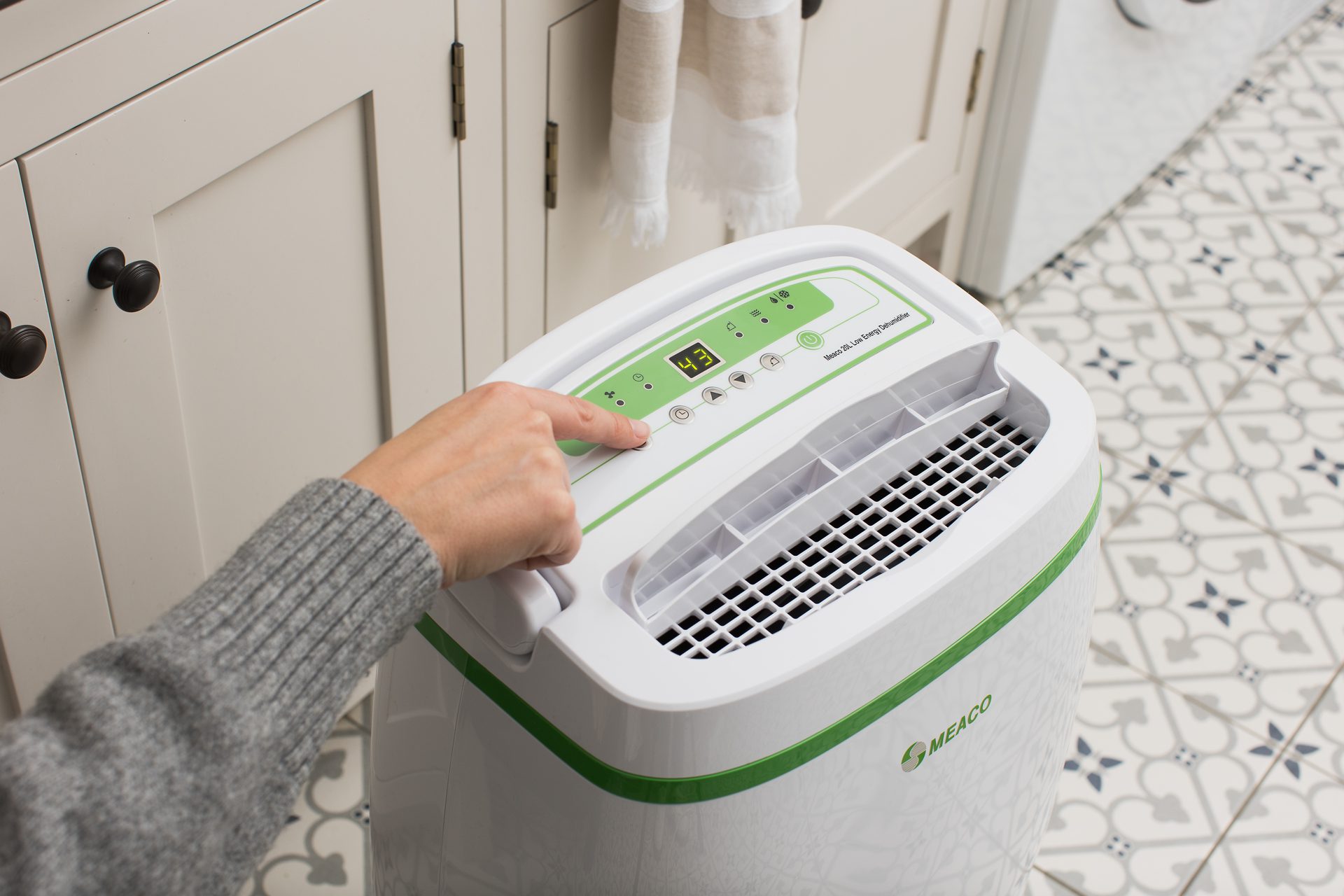
Which Dehumidifiers Can Do More Than Just Extract Moisture, Which Can Double Up As An Air Purifier As Well?
Many dehumidifiers can now be fitted with HEPA filters so they can purify the intake air as well as extracting moisture. At Meaco, we supply medical-grade H13 HEPA filters to selected compressor dehumidifiers. These can retain 99.75% particles as small as 0.3 micrometers in diameter, making it great for people with allergies like hayfever or other respiratory medical conditions such as asthma.
Because of the heat elements and sensitive parts of a desiccant dehumidifier, we do not supply things like HEPA filters. By putting anything which reduces the air intake onto the dehumidifier, we’re reducing its efficiency and can harm the machine. Equally, if things like sawdust from a garage/workshop got into the mechanics, you could be serving a short life sentence for your dehumidifier.
However, compressor dehumidifiers like the MeacoDry Arete® One and Meaco Low Energy range, are supplied with a H13 HEPA filter. It can be easily inserted into the dehumidifier turning it into a combined dehumidifier and air purifier. You can use this as much or as little as you want – the filter doesn’t have to be in the unit all the time, however when it is, the air in your home is being purified of dust, dirt, allergens, mould spores and VOCs! It’s important HEPA filters are replaced when they change colour from white to dark grey, this tends to be around every 3 months.
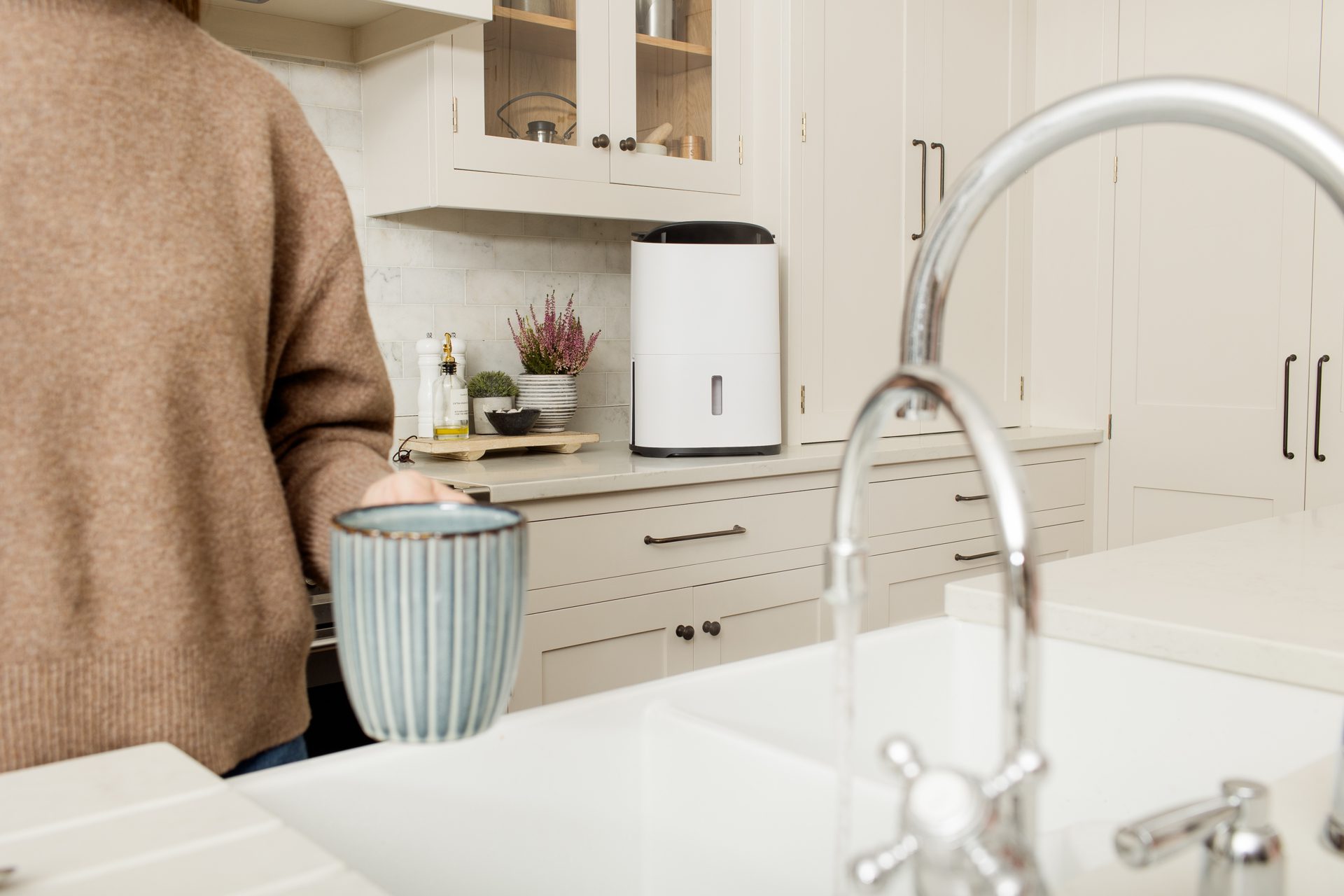
Let’s summarise the desiccants vs compressor dehumidifier debate, each is useful in different applications:
Desiccant
Compressor
Effective in which temperatures:
Desiccant:
Works well in all temperatures and are the recommend dehumidifier below 10°C
Compressor:
Only effective in spaces over 10°C, performs best at 16°C and above
Does it provide heat to the room?
Desiccant:
Yes, desiccants emit some additional warmth which can be useful
Compressor:
No, this does not provide additional heat
Are they effective when drying washing?
Desiccant:
Yes, actually optimal as they extract moisture and add warmth to drying laundry
Compressor:
Yes, these will successfully help you to dry washing indoors
Laundry mode available?
Desiccant:
Most Meaco dehumidifiers come with Laundry Modes. Check the technical specifications for more information.
Compressor:
Most Meaco dehumidifiers come with Laundry Modes. Check the technical specifications for more information.
Which is lighter in weight?
Desiccant:
Lightest and therefore easiest to move
Compressor:
The equivalent sized compressor dehumidifier will weigh an additional 6kg, however lots come with castors
Which has a cheaper cost to run?
Desiccant:
Desiccants are more expensive to run, our MeacoDry DD8L costs 9p / kWh
Compressor:
Compressors are cheaper as a general rule. Our MeacoDry Arete® One 10L costs just 4p / kWh
Which dehumidifier uses less electricity?
Desiccant:
Around 330 watts at 20°C and 60%rh
Compressor:
Between 150-260 watts depending on the size at 20°C and 60%rh
Which generates the lowest noise levels?
Desiccant:
Traditionally quieter, the 8L desiccants in our range are 39 dB
Compressor:
The latest ABC and Arete® dehumidifiers are Quiet Mark accredited, measuring 35dB and above.
Which has the longest lifespan?
Desiccant:
Lifespan is dependent on a lot of factors including the environment and how well the dehumidifier is looked after
Compressor:
Lifespan is dependent on a lot of factors including the environment and how well the compressor is looked after, however, our Arete® range is the only range to come with a free 5 year warranty
Which has the best sizing options?
Desiccant:
Because of the mechanics, desiccants only come in 8L however this is suitable from a 1 bed flat to a 5 bed house
Compressor:
Multiple sizes available for different sized houses
Which can clean the air as well as dehumidify?
Desiccant:
Dehumidify only
Compressor:
Our MeacoDry Arete® One and Meaco Low Energy range are combined dehumidifiers and air purifiers
Best application
Desiccant:
Lower temperatures or places you may want some extra warmth. For example, an unheated conservatory.
Compressor:
Applications over 10C. These are cheaper to run and available in more sizes. Great for home living.
You can see that it is not as simple as many dehumidifier brands make out when they claim that a desiccant dehumidifier – or a compressor dehumidifier is best. This is because they are normally biased towards one or other of the technologies. Hopefully the above will help – but if you are still not sure what’s best for you, give us a call on 01483 234900, email customerservice@meaco.com or comment below and we will be happy to talk it through with you.
Browse our ranges: Compressor Dehumidifiers, Desiccant Dehumidifiers
Products featured: Meaco ABC 12L , Arete® One 10 and 12L Dehumidifier and Air Purifier, Meaco DD8L, Meaco DD8L Zambezi, Meaco Low Energy Dehumidifier 12L


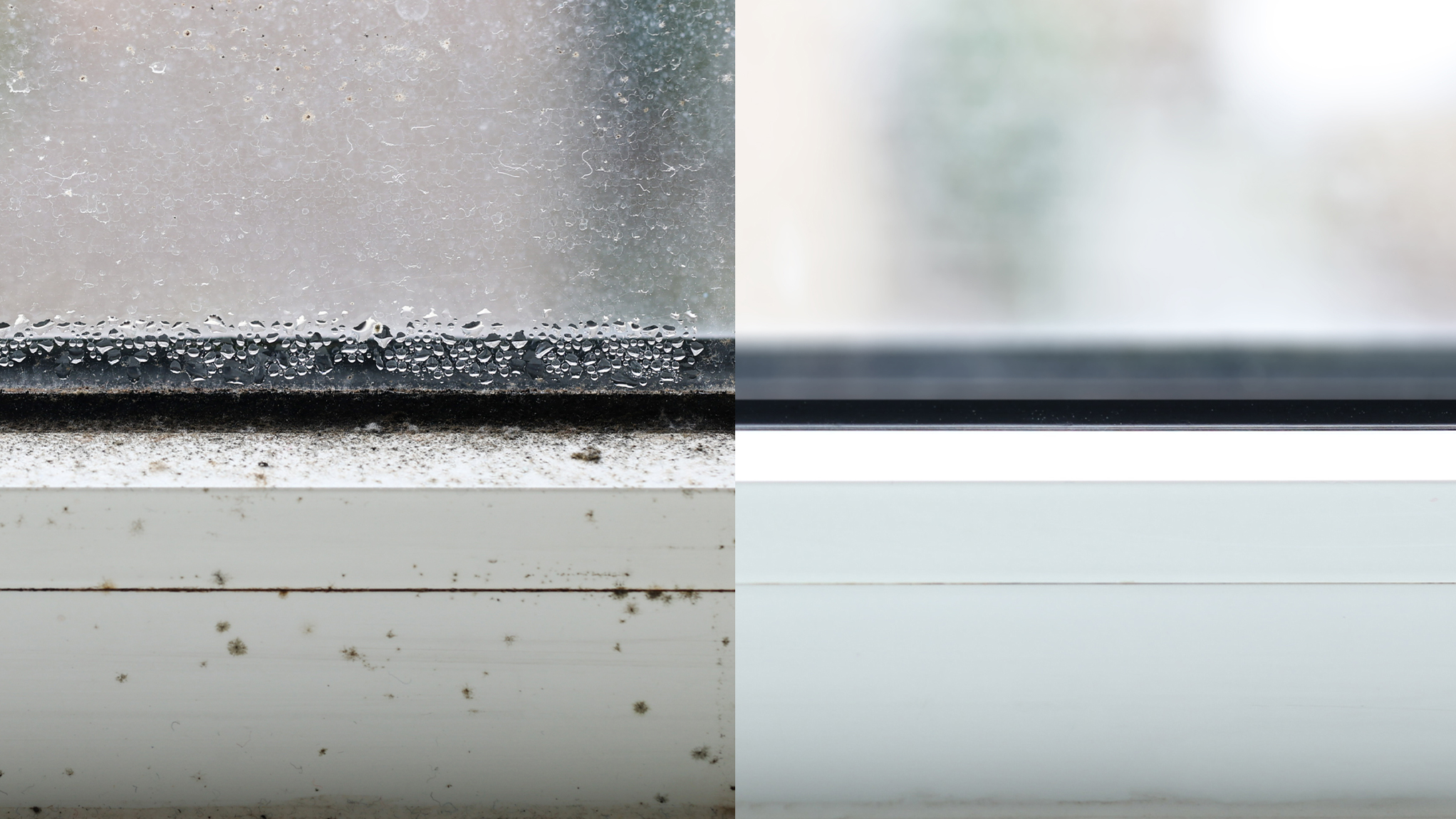

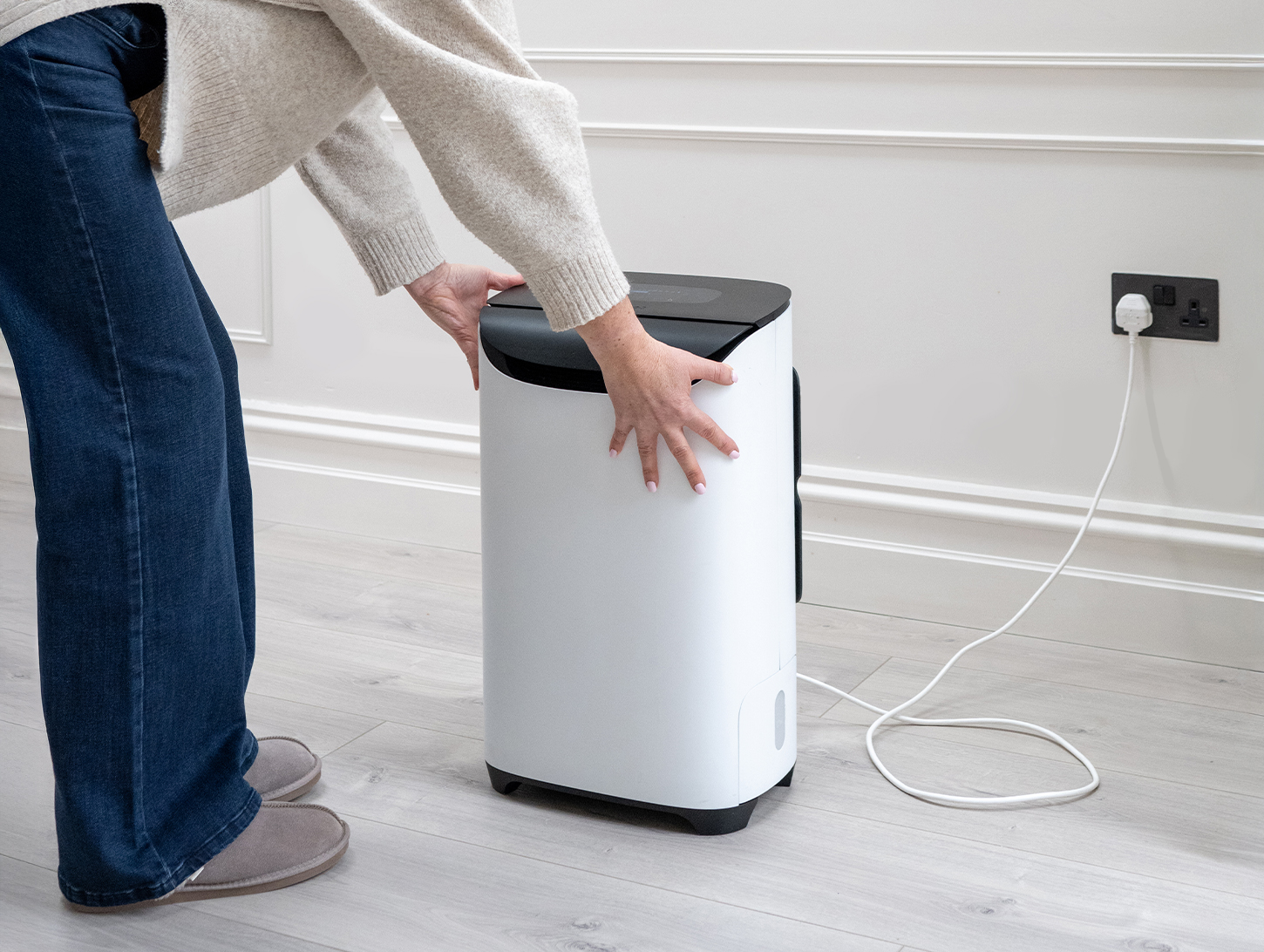

252 responses
Hi Chris.
I am looking for a dehumidifier for a garage purpose storage of classic cars. Last winter there was significant condensation being formed in the garage. The garage is newly built well insulated although not heated. Please advise . Thank you.
The DD8L will be fine for your application.
Dear Chris, I’ve been reading your very helpful responses and would just like to ask a quick question of my own.
I have a tumble dryer in a small boxroom, approx 2m x 2m. I use the residual heat from the dryer to dry clothes unsuitable to be tumbled, but would like a dehumidifier to assist with this, as well as to help dry clothes when the tumble dryer is not on. Can you confirm I should look at the MeacoDry ABC 10L model.
Thanks, Louise
Louise,
I agree a 10L ABC would be fine. If you combined this with a Meacofan 1056 then you would half the amount of time it takes to dry the clothes.
Chris
Hi Chris,
You mentioned in a earlier post that Meaco dehumidifiers don’t require external air venting, but this was the advice I was given when contacting the customer service team (back in 2016).
I’d bought the Zambezi, and a little over a year and a half later was suddenly presented with the most foulest smell that began to emanate from the unit. To me it smelt really badly of mould, and I began to experience eye irritation and infections (which I’d never had before). I was told that this was due to the desiccant material – but I was more than familiar with this scent and could tell the difference.
After multiple calls, and emails, I was told to leave the bedroom window wide open for several hours while running the dehumidifier, alongside using the Ioniser (which I always had). This only helped slightly. In addition, I vacuumed the antibacterial filter, again as recommended, every week without fail.
It wasn’t lost on me that I was still within my guarantee and was told that if I sent the device in, and nothing was wrong with it, I’d be required to pay a fee.
I was sent a replacement filter in the end, again which helped to improve things somewhat, but it did get me thinking…
Given that most people buy dehumidifiers to combat high humidity levels, for the purpose of preventing mould, it seems unlikely that mould wouldn’t not build up inside the unit, over time. I once had a different device and, after removing the grate at the back of it, was shocked to see mould had formed around the coils of the unit.
Would it not make sense for manufacturers to construct a unit that could be (safely) cleaned internally too?
And (or) how about an internal UV light steriliser that kills bacteria as moisture is drawn into the unit? There’s a reason for why this is used to sterilise water in some drinking water supplies in California.
It was fantastic for the first few months, but the sterilising ionising function seemed to stop after a few months (i.e. the fresh ionising particulate scent). Also, HEPA filters, and antibacterial filters, only last for a certain period of time too. If not, I wouldn’t have been offered a new one (and, in the interim, mould had been given the opportunity to grow inside the unit).
The only thing that helped further, was using an ozone machine, and then using the dehumidifier afterwards – and the purpose of an ozone machine is to kill mould.
The Zambezi cost a lot of money (it was your top model at the time) and lasted a little over a year and a half. I’m sure that with further innovative changes everyone could look forward to units that stood the test if time.
I now need to buy another unit, and this has made me think that a cheaper device, which can be discarded ever year, is likely the only current way of protection from mould. This seems a shame for both the environment and people’s pockets.
Lastly, I could see spots of mould when shinning a torch on the wheel inside the unit, but of course had now way of being able to reach it, and therefore clean it. Please develop a model that allows for this at least.
Natalie,
Thank you for your detail and for purchasing the dehumidifier. All desiccant dehumidifier have the potential to emit a smell into the room, this is part of the technology and is mentioned in the manual. The smell is create when there are VOCs in the room (chemicals in the air) and these are pulled by the fan through the machine as part of the dehumidification process. The desiccant can do nothing to avoid absorbing them, the problem occurs when more than one chemical is mixed together or it reacts when heated to the high temperature you get inside the machine. The resulting mix is then blown back into the room. This is where the smell comes from.
This is why the advice is to air the room and to tremove the dehumidifier from the space to try and clear the room of the smell and to remove the chemicals from the dehumidifier. Desiccant dehumidifiers have many, many advantages but if there are VOCs in the room then they can be pulled into the dehumidifier.
With regards to the sterlising ioniser we have never yet had a case of one of those failing so I would doubt that it has failed and again smell alone is not the best way to analyse something like this.
Ultra violet is a way to sterlise things but struggles when it comes to airborne bacteria and viruses because of the contact time. For ultra violet to be effective it needs to have a far longer contact time than you would get in the air flow of an air treatment device.
So the best advice here is to think about what VOCs are within the space and if they can be removed. Run the dehumidifier outside and away from the VOCs to clear the desiccant wheel and then you should be able to go back to many more years of dehumidification with Zambezi.
Hope this helps.
Chris
What if my dessicant DD8L is not functioning anymore and the warranty expire, would still be fix?and how?
Just contact the office on 01483 234900 and they will look after your machine the best they can.
Hi Chris
Looking to keep humidity at around 50-70 and have bought both the decedent and compressor versions from you.
Both work well but now we are wanting to place one in a greenhouse. The greenhouse has auto vent, but I want to confirm the decedent model DDL8 is the best option for this?
Thanks
John
If the greenhouse is going to drop below 10C then the desiccant will be the better dehumidifier to use.
Hello Chris
You have given me an answer on the Meaco DD8L junior desiccant humidifier today through Amazon I forgot to give you the size of the log cabin which is 20 sq metres un- heated and has 35mm logs and 35mm thick timber tongue and groove floor. Roof is much thinner 15mm boards with shingles which are on the thick side.
Over 80% of the year it’s closed and only get gets used for some welding or turning on my lathe.
When you have time please could you answer a couple more questions:-
1) In the summer months does it need leaving on maybe in a different setting
2) During Autumn Winter and Spring will there be enough heat from dehumidifier to stop due point fallen below I think it’s 60% to stop my lathe bed from rusting?
3) Would you suggest another one of your models to meet my requirements.
Thank you for your time.
Kind regards
Nigel
Nigel,
It depends what your aim is here, are you looking just to prevent rust on the lathe or are you looking to prevent mould growth on the timber or are you looking at preventing the timber from expanding? Leaving the dehumidifier on 365 days of the year set to 60%rh will ensure that the machine runs as little as possible but still helps to prevent the above.
Impossible to answer the dewpoint question without knowing the room temperature, other sources of heat and the heat loss from the space but you should never rely on the dehumidifier as a heat source because it could spend weeks turned off when the humidity is acceptable in the space or when the external weather is making the air dry.
If the space is going to spend long periods of time below 10°C then stick with the Junior. Above 10°C I would go for the 20L Low Energy.
Hope this helps.
Chris
Please advise! I have a house in Greece that has become damp due to building work that occurred in a very rainy season. I have bought in Greece a compressor dehumidifier that seems to help a lot. However, it does become very cold in winter and I would like the option of a humidifier running whilst I am not there in winter. The house has 2 floors and 3 bedrooms plus a bathroom that is enclosed and has an extractor fan.
Do your products ship to Greece and what desiccant type would you recommend.
Thanks
Jane,
Thanks for your email. Our desiccant range is available in Greece and can be found here – https://www.meaco.gr/
Any of the DD8L models would do the job.
regards
Chris
Thank you Chris. I was looking to buy Meaco12l low energy but now I will check and go along with your recommendations.
Thank you
Naseem
It is because you describe the space as cold that I have recommended those two models.
Hi Chris,
I have a 3 bed semi detached house, suffering from lots of window condensation.Feels very cold in the kitchen and downstairs landing. Also damp appearing in one of the bedrooms. Which dehumidifier will be more suitable? Thank you in advance for your reply.
Regards
Naseem
Naseem,
Thank you for your message, for this application we would recommend the Meaco DD8L if you like a dehumidifier to add some warmth to the space or the Meaco 20L Low Energy if you just want the cheapest machine to run but still have excellent performance in colder conditions.
Hope this helps.
Chris
Looking for a Dehumidifier for a cellar and I like the idea of not having a tank to empty. Our cellar will drop below 15 degrees so it will need to be a desiccant model.
If the continuous drainage option relies on gravity, I would need a unit that mounts in the ceiling – does that option exist?
Or can they ‘pump’ the drainage water out and up to ground level with a long enough pipe?
Mark,
Thank you for your enquiry. Another option would be either the Meaco 20L Low Energy or the Meaco 25L Ultra Low Energy compressor machines because they are both excellent down to 10°C. What most people do is to place the dehumidifier on a table and then drain into a larger container so they do not have to empty the dehumidifier so often. I am afraid that there are no ceiling options and we do not have a pump option.
Chris